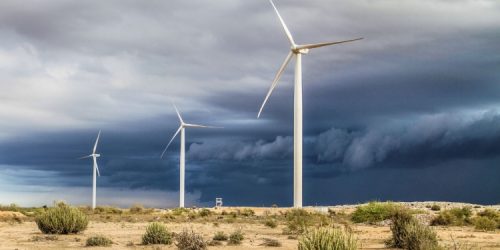Around 3 years ago the general view in the Pakistan electricity sector was that solar and wind power (together termed “variable renewable energy,” or VRE) should not be allowed to go above 5% of Pakistan’s installed capacity. This view was in part due to fears of the variability of solar and wind and their impact on the proper functioning of the grid, but underlying it was also a concern that they would further burden the power sector with high generation costs. The result was a reluctance to issue Power Purchase Agreements (PPAs) to new solar and wind projects—with Pakistan falling far behind its huge potential as a renewable energy powerhouse.
Pakistan has huge solar resource potential: According to a recent World Bank study, utilizing just 0.071 percent of the country’s area for solar PV would meet Pakistan’s current electricity demand! Of course Pakistanis already know this due to the long, hot summers, which until recently were accompanied by regular power cuts due to insufficient supply. Pakistan also has some excellent wind resource potential in the south and west of the country, as highlighted by the Global Wind Atlas.
Considering this, and at the request of the Government, the World Bank team in Pakistan commissioned a study in mid-2018 to help understand how much solar and wind could—and should—be added to the Pakistan grid considering its cost and variability. With the help of a team of consultants from Tractebel (previously Lahmeyer), the study (available via this feature story) determined that increasing solar and wind capacity to at least 30% of total installed capacity by 2030 would represent a “least-cost” expansion scenario, resulting in fuel savings equal to $5 billion over 20 years, increased energy security, and reduced greenhouse gas emissions. This will require Pakistan to install around 24,000 Megawatts of solar and wind by 2030, up from just over 1,500 Megawatts today. This represents around 150-200 MW per month!
The study has already informed the Government’s targets for solar and wind, set at 20% of total capacity by 2025 and 30% by 2030, and has helped dispel concerns over integrating much higher percentages of variable generation.
Our most recent study, “Variable Renewable Energy Locational Study,” goes on to show where all this solar and wind would be optimally sited, considering the resource potential, transmission system capacity, and constraints such as agriculture, terrain, and population centers. Three conclusions emerge:
- Reaching the 20% target for solar and wind can be largely achieved by carefully siting solar and wind projects to make use of surplus substation capacity in the existing system—this is best thought of as “low hanging fruit”;
- Getting to 30% will require more significant investment, including development of hybrid solar and wind parks which help to make better use of dedicated transmission lines;
- While every province should see significant solar and wind development, Balochistan stands out as the country’s “golden goose.” Due to the excellent solar, but especially wind resources in the west of the province, it makes economic sense to develop large solar-wind farms and construct a high-voltage DC line over 1,000 kilometers to bring power to the rest of the country.
Now the hard work needs to begin: introducing competitive bidding to bring down costs, investing in new transmission infrastructure, and implementing operational changes such as centralized forecasting to enable a smooth scale-up of solar and wind. Even though the country currently has a supply surplus due to slower economic growth (compounded by the COVID-19 pandemic), this should not hold up an immediate shift to solar and wind—especially considering it will take at least 2-3 years for any new capacity to come online.







